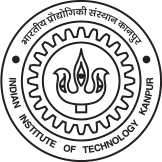
Prerequisites: None
3-0-0-9
Course Contents
Nomenclature of Organic molecules: (1)
Brief revision, Nomenclature of polycyclic compounds including bridged, spiro and other special structures.
Structure and Bonding: (2)
Nature of bonding in aliphatic, alicyclic, aromatic and heterocyclic compounds; Aromaticity in benzenoid and non-benzenoid compounds. Alternant and non-alternant hydrocarbons; Dipole moment; Resonance; Inductive and Field effects, hyperconjugation, Steric inhibition of resonance, structural effects on acidity and basicity.
Stereochemistry: (10)
Conformational analysis of acyclic systems (Pitzer strain, A strain, etc.) and cyclohexane systems (brief review as studied in Chm 201). Introduction of terminologies such as erythro, threo, , , exo, endo, epimers, etc. Conformational analysis of decalins and other polycyclic compounds related to steroids.
A brief introduction to asymmetric synthesis; Induction of chirality on a prochiral carbon atom; R and S nomenclature in (i) cyclic systems (ii) in compounds with more than one chiral centre and (iii) in biphenyls, allenes and spiro compounds. Optical isomerism in compounds without an asymmetric atom, Racemic modifications.
Conformation of acyclic molecules, topicity and prostereoisomerism (topicity of ligands and faces), chemical and biochemical transformations of heterotopic ligands and faces. Conformations of cyclic, fused and bridged ring compounds. Allylic strain (A1,2 and A1,3) and other strains.
Reactive Intermediates: (8)
Carbocations; carbanions; free radicals, radical anions and cations; arynes; carbenes and nitrenes (Introduction to structure, stability, and reactions).
Substitution and Elimination Reactions (9)
- Electrophilic aromatic substitution (in detail); Aliphatic substitutions: S N1, SN2, SN2′ and SNi reactions; neighbouring group participation. Nucleophilic aromatic substitution (brief); Free radical substitutions (both aliphatic and aromatic)
- Eliminations: E 1, E2, E1CB reactions (in detail)
- Elimination vs Substitution.
Molecular Rearrangement (8)
Benzidine, Pinacol, Benzilic acid, Favorskii, Wolff, Hofmann, Cartius, Schmidt, Lossen, Beckman, Dienone phenol, Fries (Some idea of migratory aptitude), Demyanov, BaeyerVilliger, Claisen, Cope and Wagner-Meerwein (only in brief).
Photochemistry: (4)
1Brief introduction, Norrish type I and type II cleavage, photoreduction, Patterno-Buchi reaction, cistrans isomerisation, Chemistry of vision.
Topics
Current Course Information
Instructor(s):
Number of sections:
Tutors for each section:
Schedule for Lectures:
Schedule for Tutorial:
Schedule for Labs:
Books and References



